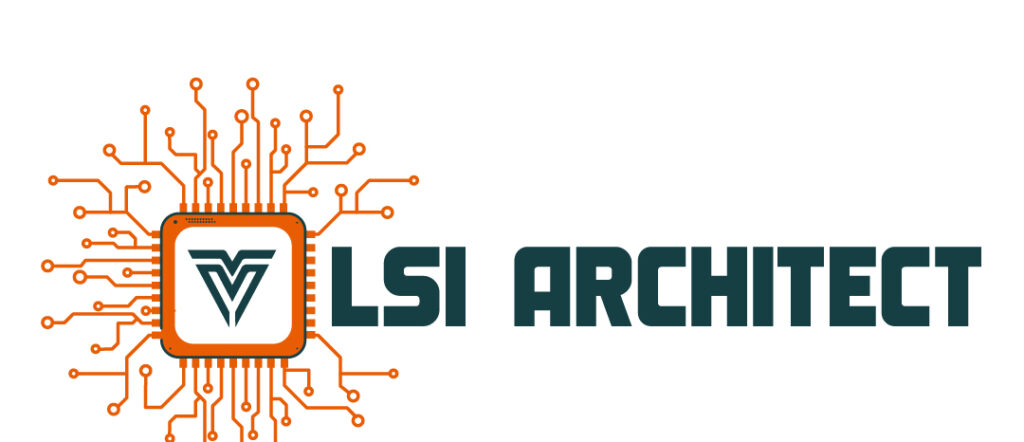This course provides an end-to-end understanding of VLSI Verification — starting from digital design fundamentals and progressing to advanced SystemVerilog, UVM methodologies, formal verification, power-aware verification, and emulation techniques.
Through hands-on labs, mini-projects, and a capstone, learners will develop the skills required for RTL-to-SoC level verification in modern semiconductor workflows.
Learning Outcomes
By the end of this course, learners will be able to:
- Understand digital design and HDL basics relevant to verification.
- Build System Verilog-based CRV and assertion-driven test benches.
- Apply UVM methodology for scalable and reusable verification environments.
- Perform coverage analysis, gate-level simulation, and regression.
- Work with protocols, processor-based verification, and low-power verification flows.
- Use formal verification, emulation, and CI/CD pipelines for sign-off.
- Deliver industry-grade verification reports with coverage and assertion results.
Course Structure & Modules
Module 1: Digital Design Fundamentals
- Number Systems & Boolean Algebra
- Combinational & Sequential Circuits
- Setup/Hold, Clock Skew, Metastability
- FSM Design Principles
Assignment: FSM for Traffic Light or Vending Machine
Module 2: Verilog HDL and Test Benches
- Verilog Modules, Ports, and Continuous Assignments
- Blocking vs Non-Blocking Assignments; Always Blocks
- Writing Basic Test Benches
- Limitations of Traditional Verilog Test Benches
- Hierarchical Design & Code Reusability
Lab: FSM / MUX / Counter in Verilog
Module 3: Fundamentals of Verification
- Verification Levels: IP, Subsystem, SoC, System
- Test Planning & Test Case Writing
- Introduction to Assertions and Their Necessity
- Coverage Types: Functional & Code Coverage
Activity: Create Test Plan for FIFO Verification
Module 4: SystemVerilog Basics for CRV
- SystemVerilog Data Types: logic, bit, int, arrays
- Object-Oriented Programming (OOP) in SV: Inheritance, Encapsulation
- Constructors & Randomization Concepts
- Program Block and its Usage in Test Benches
Mini Project: Random Stimulus Generator for ALU
Module 5: Constrained Random Verification (CRV)
- Architecture & Advantages of CRV
- Developing Reusable Random Test Benches
- Writing Constraints & Coverage Strategies
- Seeding & Debugging Random Failures
Exercise: Randomized ALU/Counter Testbench
Module 6: Assertions in SystemVerilog
- Immediate vs Concurrent Assertions
- Sequences, Properties, Temporal Expressions
- Protocol Assertion Examples: Ready/Valid, Handshake
Lab: SVA for FIFO / Handshake Protocol
Module 7: Testbench Architecture & Transaction Modeling
- Testbench Components: Driver, Monitor, Scoreboard, Generator
- Virtual Interfaces & Clocking Blocks
- Transaction-Level Modeling (TLM) Concepts
Lab: Build Testbench for FIFO Verification
Module 8: UVM Fundamentals
- UVM Base Classes & Simulation Phases
- UVM Components: Sequence, Sequencer, Agent, Environment, Monitor, Driver
- Factory Pattern, Config DB, and Objection Mechanism
Lab: UVM Testbench for UART or APB Slave
Module 9: UVM Advanced Concepts
- UVM Messaging & Debug Utilities
- Phase Jumping, TLM FIFO, Callbacks
- Integrating Scoreboarding & Coverage
- Just-In-Time (JIT) Sequences
Lab: UVM Scoreboard for SPI Protocol
Module 10: Protocol & Processor-Based Verification
- AMBA Protocols: AXI, AHB
- Peripheral Protocols: UART, SPI
- Introduction to Embedded C for Verification
- Types of Processors: ARM, RISC-V, etc.
- Processor-Based Test Benches
- C-UVM Communication
Activity: Develop UVM-C Interface Testbench
Module 11: Functional & Code Coverage
- Writing Covergroups, Coverpoints, and Bins
- Cross Coverage and Sampling Techniques
- Writing Coverage in SV Classes
- Code Coverage Types: Line, Toggle, FSM
Exercise: Coverage Plan & Report for ALU/FIFO
Module 12: Gate-Level Simulation & Regression
- Need for GLS and Setup Procedure
- SDF Back-Annotation
- Running & Debugging GLS
- Regression Basics & Log Automation
Activity: Shell/Python Scripts for Automated Regression
Module 13: Power-Aware Verification
- UPF Introduction & Low-Power Design Flows
- Dynamic Power Gating and State Retention
- Integrating Power Models into Simulation
- Assertion-Based Power Checks
Lab: Power-Aware Simulation Setup
Module 14: Formal Verification
- Introduction to Formal Verification Techniques
- Equivalence Checking vs Property Checking
- Common Formal Tools: JasperGold, VC Formal
- Formal Use Cases in RTL & Protocol Verification
Activity: Formal Check for FSM or Protocol
Module 15: Emulation & Performance Verification
- Why Emulation is Needed
- Hardware Emulators: Palladium, Veloce, Zebu
- Acceleration Techniques & Co-Simulation
- Performance Metrics and Bottleneck Analysis
Workshop: Emulation Flow Overview
Module 16: Tools & Capstone Project
- Git for Version Control in Verification Projects
- Shell, Python, and TCL Scripting for Automation
Capstone Project: Verify a UART/SPI/Timer IP using UVM + Coverage + Assertions + Report Generation.
Deliverables: Verified IP, Coverage Report, Assertion Log, Project Review Document
Suggested Industry Additions (Optional Modules)
Module 17: Functional Safety & Security Verification
- ISO 26262 & DO-254 Basics
- Fault Injection Methodologies
- Safety Mechanism Coverage
- Security Checks for Data Path & Boot
Module 18: CDC/RDC Verification
- Understanding Asynchronous Domain Crossings
- Tools & Methodologies
- CDC/RDC Checks with Example RTL
Module 19: Portable Stimulus Standard (PSS)
- Introduction to PSS
- Scenario-Based Verification Concepts
- PSS with UVM Integration
Module 20: CI/CD for Verification
- Jenkins/GitLab CI Basics
- Automated UVM Regression Pipeline
- Email & Dashboard Integration for Reports
There are no items in the curriculum yet.
